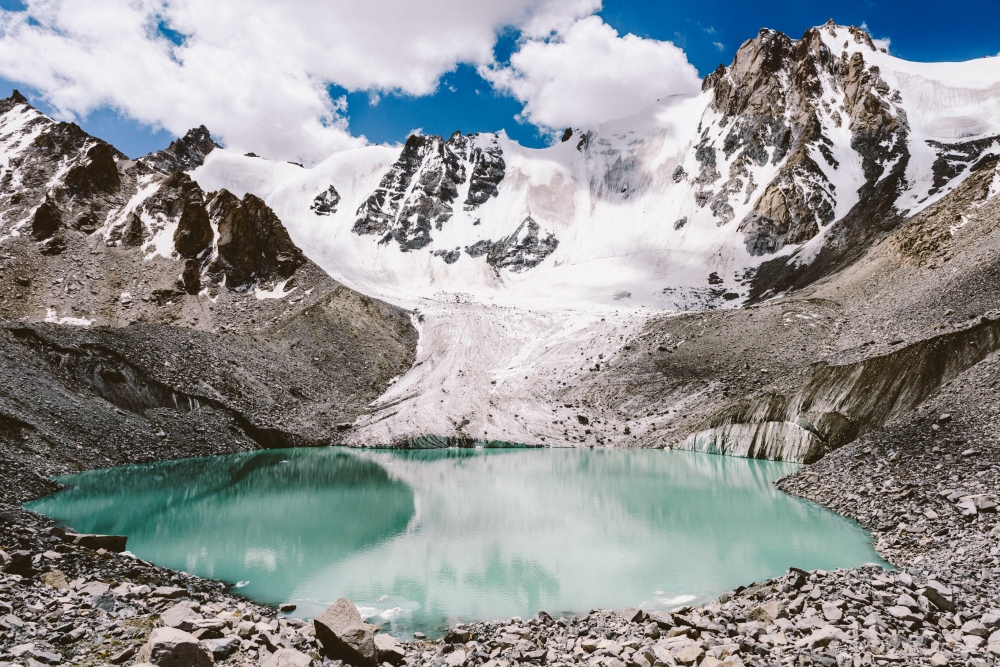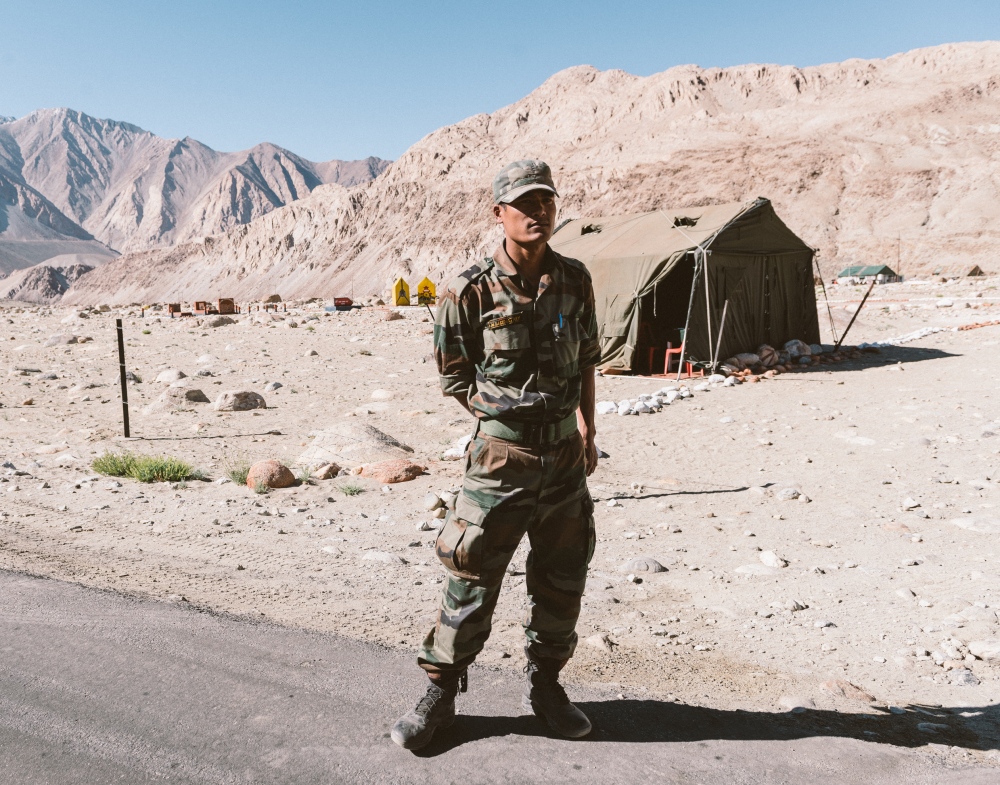Public Story
Waiting For Cloudburst
The Ladakhi and Kashmiri people of northern India live by this wisdom. Ladakh being one of the most arid high-elevation regions of the Himalayan and Karakoram range is extremely susceptible to the effects of climate change and resource scarcity. Even now, many of the prehistoric mega glaciers tucked away between the Himalayan & Karakoram mountain ranges continue to lose their ice volume due to increases in overall local temperature, jeopardizing the Ladakhi peoples' water and irrigation sources, on which they have relied for centuries.
I came to Ladakh to accompany several geologists and environmental scientists from the University of Edinburgh to examine and document prehistoric glaciers and their ablation (melt) rates. Using repeat photography methods we could compare the differences in ice volume over time. However, the research project bloomed into a much more complex investigation giving way to various branching issues, in regards to the greater effects of climate change not only towards the natural environment, but the geopolitical and social environment as well. To no surprise, the effects of global climate change and its local impact on this remote region just in the past few decades were unsettling to say in the least.
Besides measuring ice volume change, the project also involved measuring the debris remnants left behind by 'glacial lake outburst floods' (GLOF) or floods and landslides left behind by large accumulations of water, rock, and sediment stored high up in the mountains for centuries. With questions focused on the landslides and 'glacial lake outbreak floods' taking place in the region, we couldn't ignore the frequent mention of the "cloudburst" events, particularly a severly traumatic event that had occurred in 2010, leaving death, destruction, and a communal wound in the Ladakhi people and landscape.
Through interviews with local civil engineers and scientists, we discovered that shifts in global weather patterns had in recent years brought more dramatic micro shifts in the local climate and convection patterns between the Himalayan, Stok, and Karakoram mountain ranges. These dramatic shifts in air pressure and temperature had led to more frequent occurences of extremely heavy discharges of rain water in high altitude areas, or what locals refer to as "cloudburst" events. Due to the sheer volume of water brought down by cloudburst storms, enormous amounts of mountain rock and sediment would be brought down as well, crashing and mixing with large glacier lakes and then hurdled down glacier river pathways towards human populations, creating fast moving and highly destructive flash floods. In reviewing videos, one can see how it moves like a giant winding snake of rock and sediment consuming everything in its pathway. Such was the case in the village of Choglomsar and parts of Phyang in 2010. The havoc caused by the cloudburst event took over 200 lives overnight, burying homes, villages, agricultural fields, and key infrastructure. The threat of it recurring still hangs heavy in the minds and memories of Ladakhi and Kashmiri people even today.
Amongst photographing and measuring prehistoric glaciers, and their corresponding debris outbursts, I had several opportunities to get to know local people and stay in their homes, to hear the stories, their losses, their hopes, and witness the strength of their belief(s) that helped them remain optimistic about the future. Amongst so many unpredictable changes in the weather, the land, the water, the food supply, the governments' role, and an ancient culture against a modernizing and indifferent world, tomorrow remains wholly uncertain for Ladakh and its people.
The physical, cultural, political, and spiritual landscape of Ladakh, has undergone and continues to undergo great changes due to the influences of not only climate change, but modern technology and culture, resource scarcity, a booming tourist industry, and geopolitical border tensions as well. These issues bring into question whether or not Ladakh's delicate ecosystem, its social structure, and its peoples' traditional ways of life will be able to withstand the constant winds of time and change.































